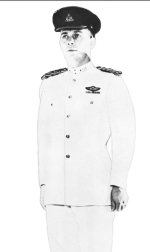- Reaction score
- 7,071
- Points
- 1,310
ICCS - The International Commission for Control and Supervision in Vietnam.I seem to recall there is a set of Patrols in the FGH museum made in white linen for a RegForce Garry officer in the very early 70s . He was serving with the IJCC or what the body was the was stood up with the American withdrawal from Vietnam.
Interesting find on The RCCS heritage page, Corps Standing Orders Vol I 1966.
Lots of pictures of the previous orders of dress, one of which is Summer Patrol Dress - (white tunic and trousers ) .



